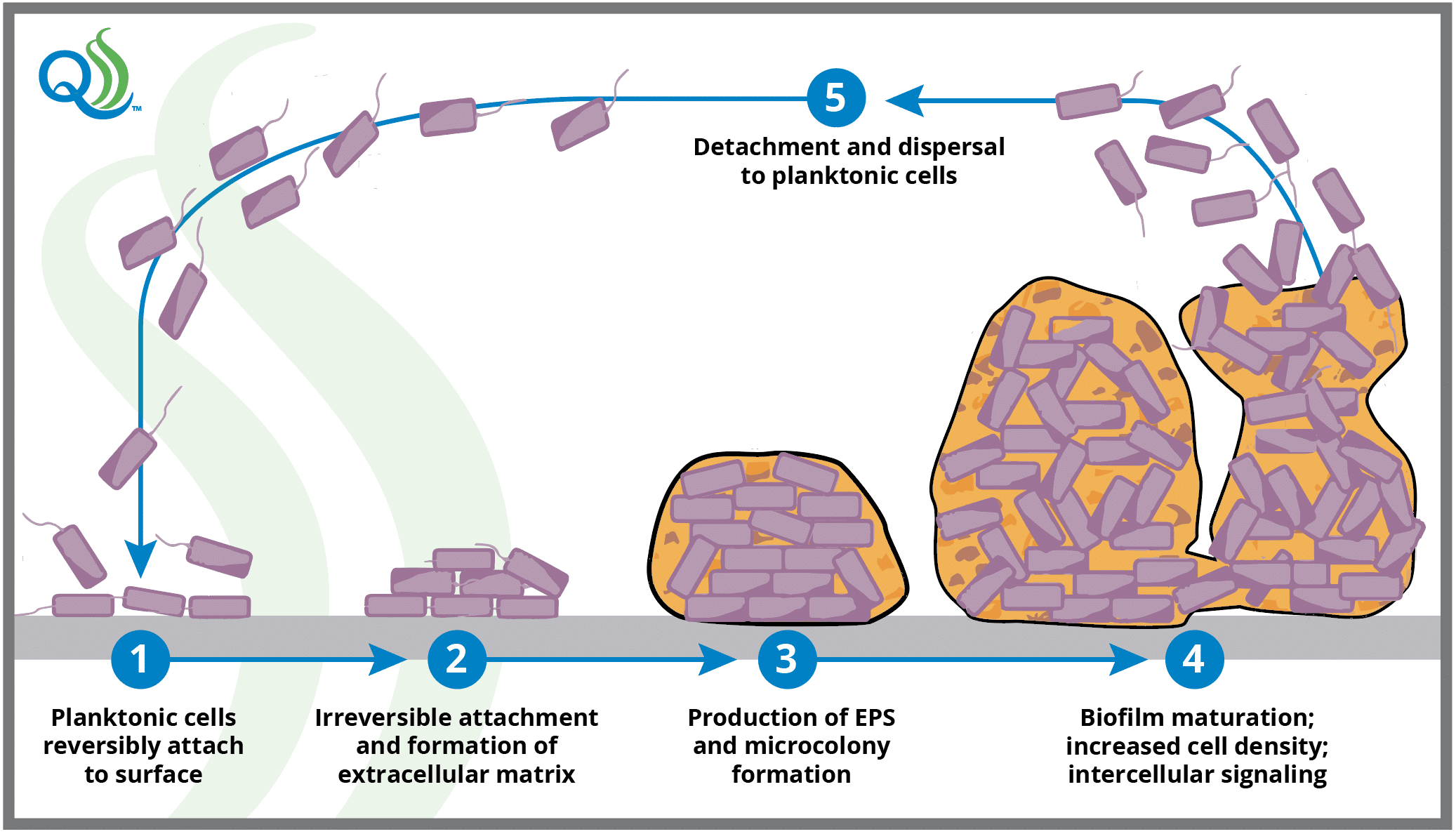Five Main Stages of Biofilm Formation
Biofilms form in a predictable but complex fashion, beginning when planktonic cells adhere to a surface in a weak, reversible, and non-specific manner and begin to excrete EPS. This is the first in a series of five main stages of biofilm formation that include: (i) the reversible attachment phase; (ii) the irreversible attachment phase, where interaction between surfaces and lipopolysaccharides found on hair-like bacterial appendages (pili or fimbriae) form tight ionic attachments; (iii) production of EPS by the cells forming the biofilm; (iv) biofilm maturation during which cells grow, cell density increases, and cells synthesize and release signaling molecules allowing them to sense and communicate with each other; and (v) dispersal or detachment phase, where the cells depart in large numbers to become planktonic cells again.
Download our white papers, Biofilms: A Persistent Challenge to the Dairy Industry and Silent Signals: How Bacterial Communication Shapes Biofilms, for additional insights and knowledge about biofilms and the vigilance required to detect, isolate, and eliminate them.
Ready to isolate and eliminate biofilms?
Our experts in liquid sampling techniques and systems are here to help! Ask Our Experts or Request a Quote today!




